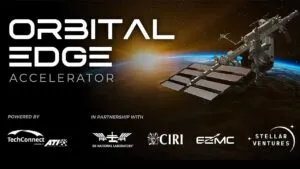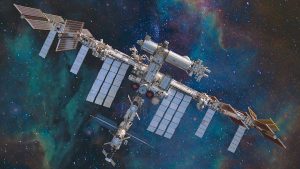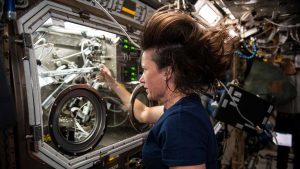The six chosen startups are: Kall Morris Inc, Magma Space, Melagen Labs, Olfera, Quantum Qool, and Raptor Dynamix.
Their application areas range from in-space logistics, satellite control systems and radiation shielding to medical studies, laser surface structuring and autonomous systems. Basically, the lab says it is looking for “the next wave of innovators that will shape the future space economy”.
Each of them will receive up to $500,000 in investment and benefit from future research opportunities with the ISS National Lab. The competition was launched back in April 2025.
Orbital Edge
The organisations making the selection were the ISS National Laboratory itself and also the investors Cook Inlet Region and Stellar Ventures.
 “Accessing space allows entrepreneurs to push the boundaries of science and technology, develop products, and build new businesses,” said Sven Eenmaa, ISS National Lab chief economist, right.
“Accessing space allows entrepreneurs to push the boundaries of science and technology, develop products, and build new businesses,” said Sven Eenmaa, ISS National Lab chief economist, right.
“With the Orbital Edge Accelerator, the ISS National Lab builds on its strategic priority to engage the startup community and fuel the next wave of innovators that will shape the future space economy.”
Startups
 The organisers describe each of the six, in their own words, below.
The organisers describe each of the six, in their own words, below.
Kall Morris is an in-space logistics company providing innovative relocation services for sustainable orbital operations. KMI has previously leveraged the space station to advance proprietary software and hardware to test a new system for space debris removal. The system will help protect critical U.S. infrastructure in orbit for internet communication, weather prediction, GPS, navigation, and more.
Magma Space is developing ultra-stable, agile, and autonomous satellite control systems that reduce vibrations. Using magnetic actuation and control software that leverages AI and machine learning, the company’s systems significantly improve satellite pointing and maneuverability to enable autonomy for missions like target tracking, remote sensing, and rendezvous proximity operations.
Melagen Labs has developed a patent-pending radiation shielding material that provides lightweight, high-efficiency protection from the extreme space environment. The company aims to enhance the safety and durability of critical systems like satellites, space suits, and space habitats.
Olfera
Olfera seeks to use its lab-on-a-chip technologies to study the brain’s olfactory pathway. This processes the sense of smell and provides an untapped route to the brain that circumvents the limitations of the blood-brain barrier. The company aims to develop new treatments for Alzheimer’s disease, depression, and other neurological conditions.
Quantum Qool has developed an ultrafast laser surface structuring technology. This is to improve power and heat management for applications in the space, semiconductor, battery, and solar industries. The company creates nanostructures on materials that significantly increase their surface area and effectiveness in emitting thermal radiation, which accelerates cooling.
Raptor Dynamix is developing smart, autonomous systems that integrate real-time data and edge computing. The company harnesses AI-powered solutions to overcome large-scale, dynamic challenges, improving human decision-making, accelerating reaction times, and improving autonomous system awareness.
All six successfully pitched their proposed projects, virtually, from 16-19 June.
ISS National Lab
So far, around 100 startups have used the ISS National Lab for R&D in diverse areas. For example, from communications and remote sensing to advanced materials and biotechnology.
The ISS National Lab highlights that startups awarded flight project status have cumulatively raised nearly $2.4 billion in funding post flight.
 International Space Station
International Space Station
The ISS was designated as a U.S. National Laboratory in 2005 by Congress. It is responsible for managing all non-NASA research. Officially enabling space research and development access to commercial, academic, and government users.
The Center for the Advancement of Science in Space (CASIS) manages the ISS National Lab. This is under a Cooperative Agreement with NASA.
Images: Nasa – (top) astronaut Megan McArthur at work on the ISS
See also: Applications closing for ISS’s Orbital Edge Accelerator programme

